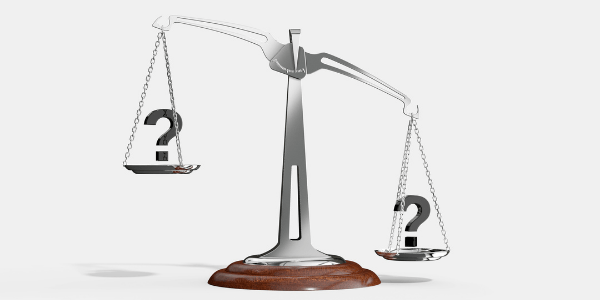Risk management is the cornerstone of successful trading. One of the most common questions new traders ask is: “How much should I risk per trade?” While the answer varies depending on experience and strategy, a widely accepted rule is to risk no more than 1-2% of your trading capital on any single trade.
But why is this so important? And what happens if you ignore this rule?
In this guide, we’ll break down:
- The dangers of over-leveraging your trades
- The difference between risking 2% vs. 10% per trade
- How losses compound and why recovery becomes harder
- Practical steps to protect your trading account
By the end, you’ll understand why disciplined risk management separates successful traders from those who blow up their accounts.
Why Risking Too Much Per Trade Is a Recipe for Disaster
Many new traders make the mistake of risking large portions of their capital on single trades, hoping for quick profits. However, even a short losing streak can wipe out their accounts.
Let’s compare two scenarios:
- Trader A risks 2% per trade
- Trader B risks 10% per trade
Both start with a $20,000 account and experience a 19-trade losing streak (unlikely but possible). Here’s how their accounts would look:
| Trade # | Account Balance (2% Risk) | Risk Amount ($) | Account Balance (10% Risk) | Risk Amount ($) |
|---|---|---|---|---|
| 1 | $20,000 | $400 | $20,000 | $2,000 |
| 2 | $19,600 | $392 | $18,000 | $1,800 |
| 3 | $19,208 | $384 | $16,200 | $1,620 |
| 4 | $18,824 | $376 | $14,580 | $1,458 |
| 5 | $18,447 | $369 | $13,122 | $1,312 |
| … | … | … | … | … |
| 19 | $13,903 | $278 | $3,002 | $300 |
Key Takeaways:
- Trader A (2% risk) loses 30.5% of their account.
- Trader B (10% risk) loses 85% of their account.
Even after just five losing trades, Trader B is down to $13,122, while Trader A still has $18,447.
The Psychological Impact of Large Losses
Losing 85% of your account isn’t just financially devastating it’s emotionally crushing. Many traders who suffer such losses quit altogether. Worse, recovering from large losses is exponentially harder.
The Math Behind Recovery: Why Small Losses Matter
Here’s a harsh truth: The bigger the loss, the harder it is to recover.
For example:
- If you lose 10%, you need an 11% gain to break even.
- If you lose 50%, you need a 100% gain just to recover.
- If you lose 90%, you need a 900% gain—nearly impossible.
Here’s a table illustrating the recovery challenge:
| Loss % | Required Gain to Break Even |
|---|---|
| 10% | 11% |
| 20% | 25% |
| 30% | 43% |
| 40% | 67% |
| 50% | 100% |
| 60% | 150% |
| 70% | 233% |
| 80% | 400% |
| 90% | 900% |
Why This Matters for Traders
- Small, controlled losses allow for easier recovery.
- Large losses require near-impossible returns.
- Consistency beats aggression in trading.
How to Implement Proper Risk Management
1. Follow the 1-2% Rule
Never risk more than 1-2% of your account per trade. If you have a $10,000 account:
- 1% risk = $100 per trade
- 2% risk = $200 per trade
This ensures you can survive losing streaks without catastrophic damage.
2. Use Stop-Loss Orders Religiously
A stop-loss automatically exits a trade at a predetermined loss level. Calculate your stop-loss based on:
- Account risk (1-2%)
- Trade setup (support/resistance, volatility)
Example:
- If you risk $100 per trade and your stop-loss is 50 pips away, your position size should be $2 per pip ($100 ÷ 50 pips).
3. Adjust Position Sizing Based on Volatility
More volatile pairs (like GBP/JPY) require wider stops, meaning smaller position sizes. Less volatile pairs (like EUR/USD) allow tighter stops.
4. Avoid Martingale Strategies
Doubling down after losses (like in martingale systems) leads to rapid account blowouts. Stick to fixed fractional risk.
5. Track Your Performance
Keep a trading journal to analyze:
- Win rate
- Average win vs. average loss
- Maximum drawdown
If your strategy has a 60% win rate but you’re still losing money, your risk-reward ratio may be off.
Final Thoughts: Be the Casino, Not the Gambler
Successful traders treat trading like a business, not gambling. Casinos win because they have a statistical edge and strict risk controls youshould too.
Key Principles to Remember:
✔ Risk only 1-2% per trade—no exceptions.
✔ Use stop-losses on every trade.
✔ Size positions correctly based on volatility.
✔ Avoid revenge trading after losses.
✔ Focus on long-term consistency, not short-term gains.
By following these rules, you protect your capital, reduce emotional stress, and stay in the game long enough to succeed.
Would you rather lose 30% and recover easily… or lose 85% and face near-impossible odds? The choice is yours. Trade smart.
Need Help Calculating Your Risk?
Use our Free Risk Management Calculators to determine optimal position sizes and stop-loss levels for your trades.


